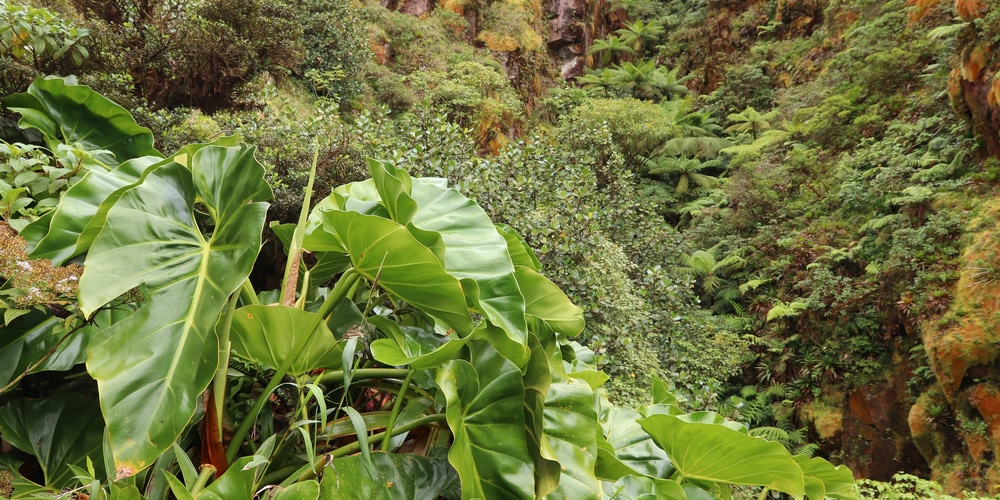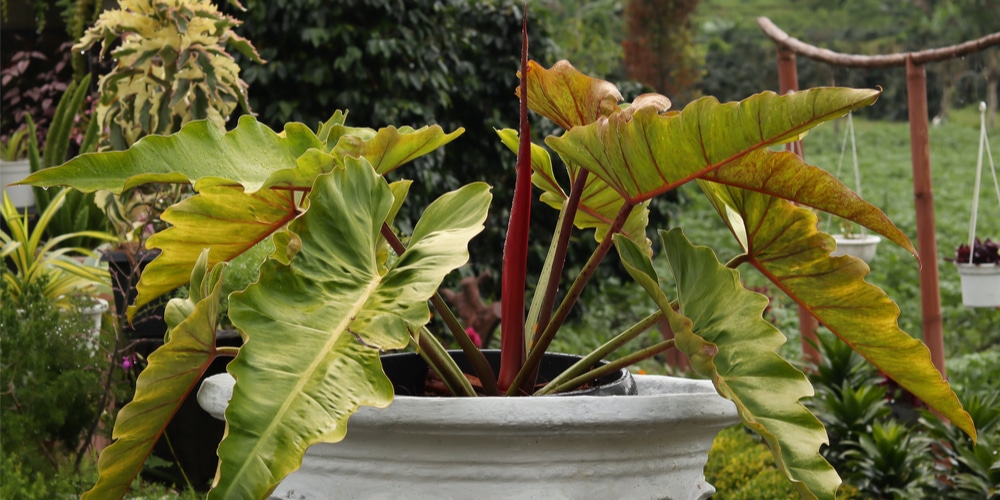The Philodendron Giganteum is a large plant with enormous heart-shaped leaves that can grow up to 2 feet long. These plants have a tropical look and a lovely fresh green color.
The Philodendron Giganteum is a pretty rare species of plant which can be kept as a houseplant or grown outdoors in the right climate. Due to its size, most people opt for smaller philodendron varieties. Let’s look at how to grow and care for a Philodendron Giganteum plant.
What is a Philodendron Giganteum

The Philodendron Giganteum is a unique plant that, as its name suggests, gets very big. It can grow to 15 feet in height and 8 feet wide. They also have large leaves. These plants originate from the rainforests of South America.
The Philodendron Giganteum is part of the Araceae family which contains over 400 species of plants. They are toxic to humans and animals if ingested and can cause some nasty symptoms. It’s best to keep your tropical plants away from young children and pets. Philodendrons can also cause skin irritation, so it’s best to wear gloves when handling your plant.
How to Care for a Philodendron Giganteum

If you want to grow a Philodendron Giganteum, you must ensure you have enough space in your home, yard, or greenhouse. These plants are relatively fast-growing and can get huge. They can grow outdoors in USDA zones 9 to 11. Once you find a large enough area to plant the Philodendron Giganteum, it’s relatively easy to care for. Here’s how to grow a thriving Philodendron Giganteum plant:
Sunlight needs
Philodendron Giganteum requires medium to bright indirect sunlight. It’s best to place this plant in an area with filtered light. Don’t leave the plant in the full sun, or its leaves may burn. It’s best to place this plant near an east or west-facing window where it won’t be harmed by the sun’s UV rays.
Watering Requirements
Aim to keep your philodendron’s soil moist but don’t overwater. If the soil becomes waterlogged, the plant’s sensitive roots will begin to rot. Most people find that their plant needs to be watered once a week during the growing season. It’s worth feeling the soil before watering to check that it’s dried out sufficiently. Only water philodendrons when the top two inches of soil have dried out. In the fall and winter, you can reduce watering to every ten days.
Soil
Philodendron giganteum prefers soil that’s airy and well-draining. Add some peat moss, perlite, and sand to a standard houseplant premix to stop it from becoming compacted. Alternatively, use a soil that’s formulated for cactus or tropical plants.
You may like to add some orchid barks or coconut husks to the soil as this helps with drainage. The roots can also wrap around organic materials and form air pockets in the soil.
Fertilization
Philodendron giganteum plants should be regularly fertilized. As they are such large plants, they require adequate nutrients to grow healthily. Organic options such as worm castings are best for philodendrons.
Humidity
Most homes have a humidity of about 30%, while philodendrons require at least 60%. One of the easiest ways to improve humidity for your plant is to place it in the bathroom, where it will benefit from the shower’s steam.
Alternatively, you can mist or wipe your plant leaves a few times each week. Be careful not to soak the plant’s leaves as this can cause them to rot. If you have lots of tropical plants in your home, you may like to invest in a humidifier to help provide the recommended humidity levels.
Temperature
Aim to keep the temperature between 65 to 80°F. Your plant can cope with a slightly lower nighttime temperature of 55 but shouldn’t be left outside if frost is likely.
Pruning
Philodendron Giganteum don’t require pruning. You can trim off any leaves that are damaged, have turned yellow, or look unhealthy.
Pests
The Philodendron giganteum is pest resistant as long as it’s well cared for and healthy. These plants can be affected by sap-sucking insects if they are weak. Aphids, spider mites, mealybugs, and thrips can infest philodendrons. You can use neem oil or intertidal spray to get rid of insects.
Conclusion
Philodendron Giganteum is a very large plant that is best grown outdoors as long as you live in the correct climate. Some people do grow their plants indoors.
Philodendron Giganteum are easy to care for as long as they are planted in indirect sunlight and are watered regularly. As these plants are so large, they will need to be planted in good quality soil and be fertilized regularly.
Related: